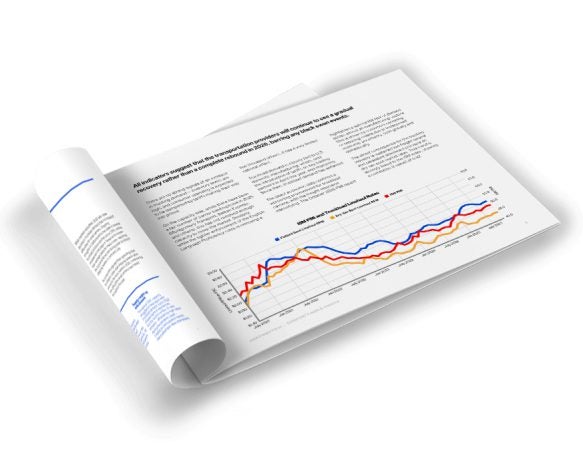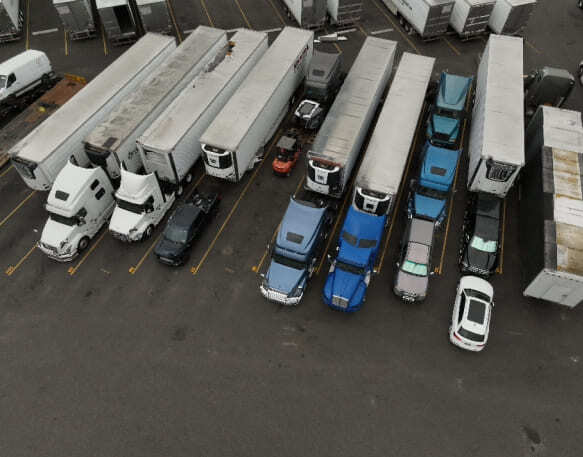Imagine multiple businesses or shippers with cargo heading in the same direction, but none have enough goods to fill an entire truck, container, or cargo hold. Instead of each shipper dispatching their goods separately, resulting in several partially filled vehicles heading to the same destination, consolidated freight shipping combines these smaller shipments into one full load. This combining of goods from various shippers into a single shipment offers numerous advantages.
In contrast, traditional shipping methods operate on a more straightforward principle: one shipper, one shipment. Whether the cargo occupies a small section or the entirety of the transport vehicle, the shipment remains isolated and does not share space with cargo from other shippers. While this approach has its benefits, particularly for large shipments that require a whole truck or container, it might not be the most efficient or cost-effective method for smaller loads.
By consolidating, shippers are essentially participating in a communal shipping system, reducing wasted space, streamlining the logistics process, and often benefiting from reduced shipping costs. The transition from the ‘one-shipper-one-shipment’ mindset to embracing the efficiencies of consolidated shipping marks a significant evolution in the world of logistics.
LTL, LCL, and FTL: Decoding terms
In the world of shipping and logistics, terminologies like LTL, LCL, and FTL are thrown around frequently. For the uninitiated, these might seem like mere jargon, but they hold critical implications for how cargo is shipped. Let’s break them down:
LTL (Less Than Truckload)
Definition: LTL shipping pertains to shipments that are larger than a parcel but do not occupy the entire space of a standard truck trailer.
Characteristics: LTL shipments often involve multiple shipments from various shippers, all consolidated into a single truckload. This means a single truck might be carrying goods for several consignees, with the cargo making several stops before reaching its final destination.
Variations: The kind of cargo and its requirements can vary. For instance, dry van LTL is typically used for goods that don’t need temperature control. Reefer LTL, on the other hand, is for shipments that require a controlled temperature, like perishables. Flatbed LTL is ideal for oversized or oddly shaped cargo that might not fit inside a standard truck trailer.
Advantages: LTL shipping offers flexibility, as shippers only pay for the trailer space they use. It also fosters shipping cost savings, particularly for small and medium-sized businesses.
LCL (Less Than Container Load)
Definition: LCL is a term predominantly used in ocean freight, referring to shipments that do not fill an entire standard cargo container.
Characteristics: Just like LTL, LCL involves consolidating cargo from multiple shippers into a single container. This allows shippers with smaller cargo volumes to share the cost of shipping.
Advantages: LCL offers a cost-effective solution for shippers who don’t have enough cargo to fill an entire container. It provides flexibility in shipment sizes and can be a faster alternative to waiting to have enough cargo for a full container load.
FTL (Full Truckload)
Definition: FTL shipping involves renting the entire truck or trailer for a single shipment.
Characteristics: Unlike LTL, where the truck carries shipments for multiple consignees, FTL is dedicated to one shipper. The entire space of the truck is available, and typically, the cargo makes no stops until it reaches its final destination.
Advantages: FTL is typically faster than LTL, as there are no multiple stops involved. This method is particularly useful for large shipments or when the shipper wants more control over the shipping process.
The benefits of consolidated freight shipping
Consolidated freight shipping is more than just a buzzword; let’s unpack the most significant advantages:
1. Economies of scale lead to significant shipping cost savings
When shipments are consolidated, the shared nature of transportation means that the cost per unit shipped often decreases. By merging various smaller shipments into one larger shipment, shippers can achieve a cost structure that gravitates toward less-than-truckload rates. This approach allows them to avoid the steeper costs associated with booking an entire truck, especially when they don’t have enough cargo to fill it. In essence, shippers share the transportation costs, leading to savings that can be passed onto consumers or reinvested in the business.
2. Reduced environmental impact
Transportation, particularly trucks, contributes significantly to global carbon emissions. With consolidated shipping, the need for multiple vehicles is drastically reduced, leading to fewer trucks on the roads. This not only translates to decreased carbon emissions but also less traffic congestion and road wear. The environmental benefits extend beyond just reduced carbon footprints. Reduced fuel consumption, decreased noise pollution in urban delivery areas, and fewer vehicles to manufacture and maintain collectively contribute to a greener and more sustainable planet.
3. Improved cargo security
Consolidation offers an unintended yet highly beneficial consequence: enhanced cargo security. When shipments are consolidated, they typically undergo fewer stops and transfers compared to singular shipments. Every stop or transfer is a potential point of vulnerability where theft, loss, or damage can occur. By reducing these points, the risks associated with these vulnerabilities decrease. Moreover, consolidated shipments, given their economic significance, often warrant stricter security measures, adding another layer of protection to the goods in transit.
4. Streamlined supply chain operations
The shift from traditional to consolidated shipping is akin to evolving from a disjointed, piecemeal process to a well-oiled, streamlined operation. Consolidated shipments often follow optimized routes and schedules, ensuring timely deliveries. For businesses, this means better inventory management, as there’s greater predictability in when goods will arrive. Furthermore, with fewer individual shipments to track, administrative overheads are reduced. This operational efficiency can lead to improved customer satisfaction, as goods are delivered promptly, and businesses can pass on their savings in the form of competitive pricing.
Navigating the challenges in freight consolidation
While consolidated freight shipping offers a multitude of advantages, it’s essential to recognize and navigate its inherent challenges. Here’s a deep dive into the complexities and considerations:
1. Complexity in planning and execution
The consolidation process is not a simple “plug-and-play.” It involves combining shipments from various shippers, each with its own set of requirements, destinations, and timelines. This necessitates a high degree of coordination and meticulous planning.
Diverse shipments: Each consolidated shipment might have goods ranging from perishables requiring temp control to bulky items needing flatbed LTL. Understanding and managing these diverse requirements is crucial.
Optimizing load factors: Filling a truck efficiently requires a keen understanding of the spatial requirements of each shipment. This becomes a puzzle of sorts, ensuring that each shipment fits optimally, maximizing space, and ensuring safety.
Coordination among shippers: Since multiple shippers are involved, effective communication becomes paramount. Any miscommunication can lead to inefficiencies or mistakes in the consolidation process.
2. Potential delays
Consolidated freight, by its very nature, often involves multiple stops to pick up and drop off various shipments. While this is efficient from a space and cost perspective, it introduces the risk of delays.
Dependency on multiple shippers: If one shipper is late or faces issues, it can delay the entire consolidated shipment, affecting all other shippers involved.
Logistical challenges: Routes need to be meticulously planned to minimize delays. However, unforeseen issues like traffic, road closures, or vehicle breakdowns can impact timelines.
3. Risk management
When goods from various shippers share space, the risk landscape changes. Instead of managing the risk for a single shipment, logistics providers now need to consider the collective risk of all shipments.
Shared responsibility: If damage occurs, determining responsibility becomes complex. Was it due to the handling by the logistics provider, or did one shipment negatively impact another?
Insurance implications: Consolidated shipments might require different insurance considerations, given the diverse nature of the goods involved.
Ensuring cargo integrity: With varied goods in close proximity, there’s a need to ensure that no shipment compromises the integrity of another. For instance, a spill from one shipment shouldn’t damage other goods in the consolidated load.
Empowering shippers with DAT iQ: Data-driven insights at your fingertips
For shippers eager to harness the benefits of shipping consolidation while mitigating its challenges, DAT iQ Analytics shipper solutions are the answer.
Powered by the industry’s most reliable data, representing a staggering $1 trillion in transaction data, DAT iQ ensures logistics efficiency improvement at every step.
The versatility of DAT iQ data is evident in its robust mode offerings. Whether you’re looking into TL shipments, delving into LTL nuances, exploring intermodal options, or ensuring temp control capacity for sensitive goods, DAT iQ offers insights for every need. This breadth ensures that no matter your shipping requirement, you have the data-backed insights to guide your strategy.
Every shipment is unique, and DAT iQ recognizes this by providing wide equipment-type coverage. Whether you’re shipping using a dry van, maintaining temperature control with a reefer, or transporting oversized cargo on a flatbed, DAT iQ offers granular insights tailored to each equipment type.
Plus, with unparalleled North American regional coverage, DAT iQ offers insights that take into account regional variations, challenges, and opportunities, ensuring that your logistics strategy is geographically optimized.
The best part? One of the standout features of DAT iQ is its LTL data. In a landscape where LTL shipping is gaining prominence, having access to vast and trustworthy LTL data becomes a game-changer. This allows for more accurate forecasting, better rate negotiations, and the ability to identify and capitalize on emerging LTL trends.
Get deep insights into your transportation rate and network performance with analytics from DAT iQ today.
In the ever-evolving landscape of logistics, consolidation is the path forward. While it does come with its set of challenges, the freight consolidation advantages far outweigh the downsides. From reaping shipping cost savings to streamlining operations and reducing environmental impacts, the benefits of shipping consolidation are manifold.




